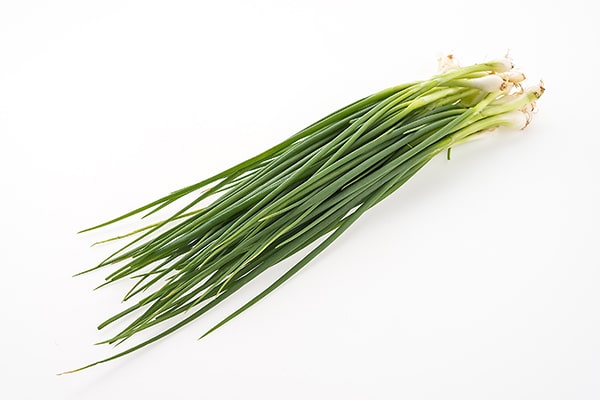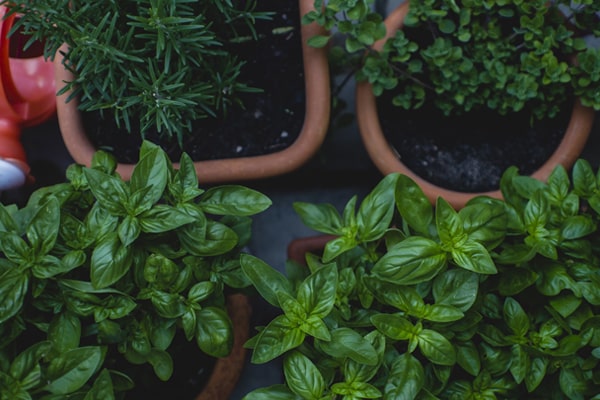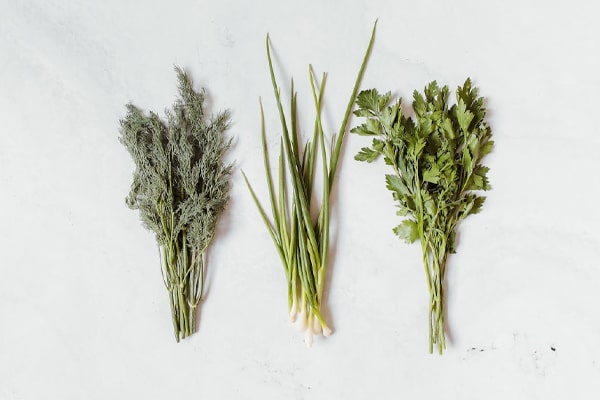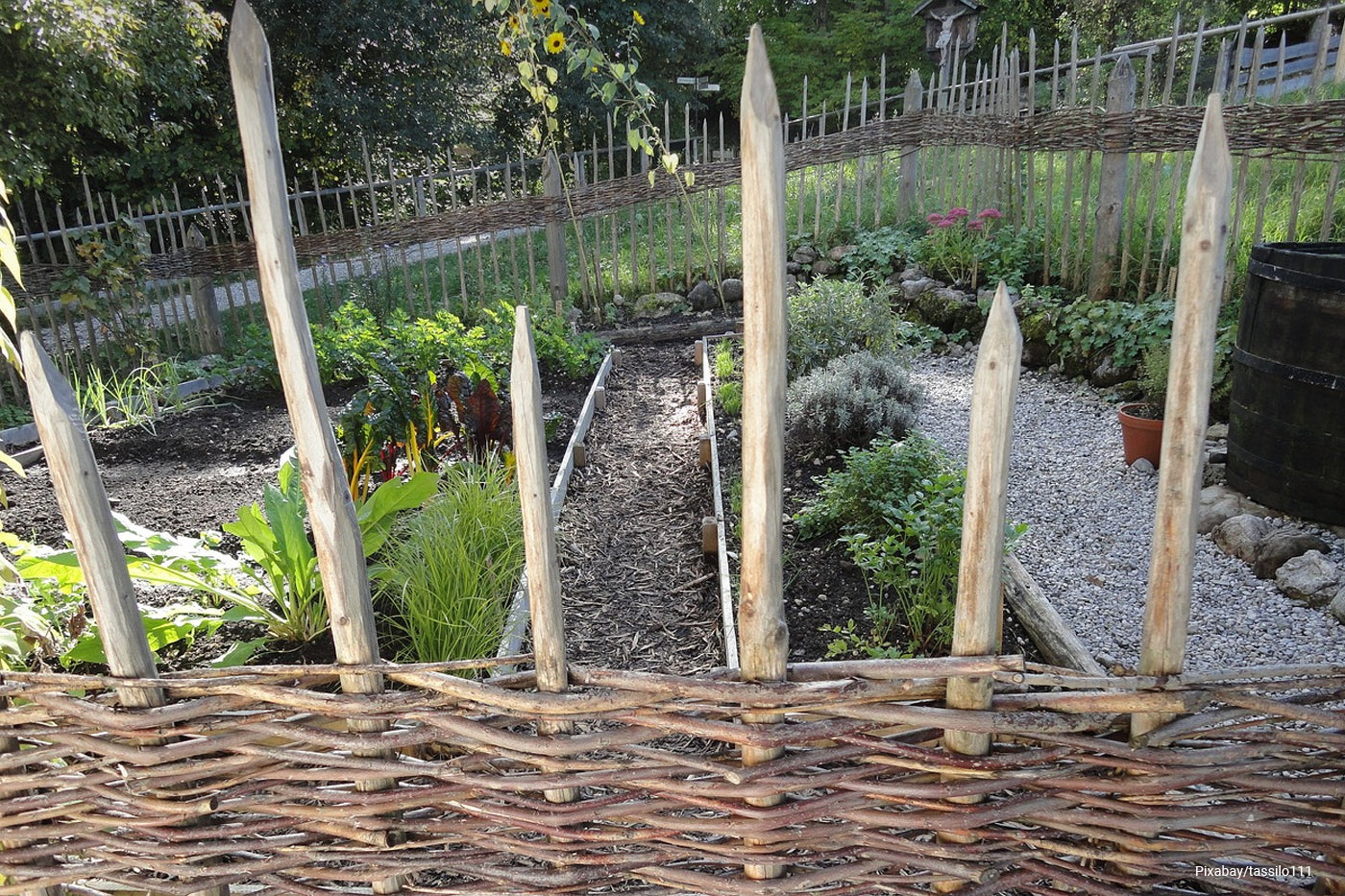When you grow your own herbs, you have fresh and healthy options to season everyday meals right in your own garden. Plus, it’s a fun and rewarding activity that can save you money.
You’ll know exactly what’s in your food because you’ve nurtured it from seed to harvest.
It’s also rewarding because growing your own food is good for the environment. Food production is one of the worst offenders in terms of producing massive waste. Most of the trash that fills up landfills is from food packaging. Transporting fresh produce also burns fossil fuel, which causes air, soil, and water pollution.
Because you’re reducing the need for transportation and packaging, you are minimizing your carbon footprint.
So, if you have the space and time, give growing your own herbs a try!
Contents []
How to Grow Your Own Herbs

Growing herbs is incredibly beginner-friendly because many herbs do not take a lot of effort to thrive. It’s a great hobby for anyone – even those who could only spare a sunny windowsill for space. Below are tips for growing popular, easy-to-care-for herbs:
Basil
Basil loves warm weather, so plant it in a sunny spot with well-draining soil after the last frost has passed. You can start basil from seeds or buy small plants from a nursery.
Taking care of basil is easy – keep the soil consistently moist but not waterlogged. Pinch off the flower buds to encourage leaf growth and prevent the plant from going to seed too quickly. If the basil plant goes to seed, the flavor of the leaves will change.
You can start harvesting basil leaves once the plant has several sets of leaves. Pick the leaves as needed, starting from the top of the plant.
Mint
Mint thrives in rich, moist soil and partial shade. It’s a good idea to plant mint in a container to prevent it from spreading aggressively.
Water regularly to keep the soil evenly moist. Prune mint frequently to encourage bushier growth and prevent it from becoming leggy. One thing to keep in mind when growing mint – it is an aggressive grower. It won’t take a lot for one mint plant to become invasive, so prune regularly.
Harvest mint leaves as soon as the plant is established. Trim the stems just above a cluster of leaves to encourage new growth.
Chives

Chives prefer well-draining soil and full sun but can tolerate partial shade. Plant them in a location where they’ll have room to spread.
Water chives regularly, especially during dry spells when the herb is especially thirsty. Because chives need more room to grow, you need to divide the clumps every few years. This will keep the plants healthy and vigorous.
You can start harvesting chives once the plants are well-established. Cut the leaves with scissors, leaving at least 2 inches of growth to allow for regrowth. Harvest regularly to encourage new growth.
Parsley

Parsley grows best in rich, moist soil and direct sunlight for at least 6 hours. It can tolerate light or partial shade. You can start parsley from seeds indoors or plant seedlings outdoors after the last frost. Seed germination is slower on parsley, so be patient and check regularly if sown indoors.
Keep the soil consistently moist and mulch around the plants to retain moisture. Once the plant matures, pinch off any flower buds to encourage leaf production.
You can start harvesting parsley leaves once the plant has several sets of leaves. Be careful when you’re harvesting the leaves or you might end up hurting the plant. Cut the outer stems first, leaving the inner ones to continue growing.
Coriander
Coriander prefers well-draining soil and a cool growing environment. If you live in a region with a hot climate, grow it in shady areas. This easy-to-grow herb can be grown directly in the soil or in a container. It doesn’t grow too big, especially when the leaves are harvested regularly.
Coriander loves rich, soft soil. Keep the soil consistently moist but not waterlogged. Coriander bolts quickly in hot weather, so harvest it promptly. Ideally, grow it in a pot so you can transfer it to other areas when the weather gets too hot.
You can start harvesting coriander leaves once the plant is a few inches tall. Cut the stems just above a set of leaves to encourage bushier growth.
Rosemary

Rosemary thrives in well-draining soil and full sun. Plant it in a location with good air circulation to prevent fungal diseases. Avoid sowing in wet soils or potting compost because this herb is prone to root rot.
Water rosemary sparingly, allowing the soil to dry out between waterings because this herb is sensitive to wet, waterlogged conditions. Prune the plant regularly to maintain its shape and encourage new growth.
You can start harvesting rosemary sprigs once the plant is established. Cut the stems as needed, avoiding cutting into woody growth. Harvest regularly to encourage new growth.
Thyme
Thyme prefers well-draining soil and full sun but can tolerate partial shade. One thing to keep in mind, the more intense the sun it receives, the more robust the flavor will be!
Once established, thyme is virtually trouble-free to maintain because it’s very resilient. However, it is prone to fungal diseases so give this herb more room to grow and sow in a spot with good air circulation.
Water thyme regularly, especially during dry spells. Trim the plant regularly to encourage bushy growth and prevent it from becoming leggy. You can start harvesting thyme leaves once the plant is established. Trim the stems as needed, leaving at least a few inches of growth for regrowth.
Sage

Sage prefers well-draining soil and full sun. Plant it in a location where it has room to spread, as it can grow quite large.
Water sage sparingly, allowing the soil to dry out between waterings. In fact, sage could die in waterlogged soils, especially during the winter season. Use free-draining soil or compost for best results. This plant is also suitable for container gardens.
You can start harvesting sage leaves once the plant is established. Prune the plant regularly to maintain its shape and prevent it from becoming woody. Cut the stems as needed, avoiding cutting into woody growth.
Lovage
Lovage prefers rich, moist soil and partial shade. Plant it in a location where it has room to spread, as it can grow quite tall and cast a shadow on shorter plants, which can stunt their growth.
Water lovage regularly, especially during dry spells. Fertilize the plant in the spring to encourage vigorous growth.
You can start harvesting lovage leaves once the plant is established. Harvest the leaves from spring to summer to encourage more growth. Cut the stems as needed, leaving some growth for regrowth. This plant tends to stop producing new leaves in the summer so cut back the old foliage regularly.
General Tips For Harvesting Herbs and Keeping Them Growing

Harvesting herbs and keeping them growing healthy is important to ensure you have a steady supply of fresh herbs to season your everyday meals. Here are some simple tips to help you with harvesting and maintaining your herb garden:
Timing is key: When it comes to harvesting herbs, timing is crucial. For most herbs, it’s best to harvest them in the morning after the dew has dried but before the sun gets too hot. This is when the essential oils that give herbs their flavor and aroma are at their peak.
Use sharp tools: Always use sharp scissors or pruning shears to harvest your herbs. Dull blades can crush the stems, leading to damage and disease. Make clean cuts just above a set of leaves to encourage bushier growth.
Harvest frequently: Regular harvesting encourages your herbs to grow more vigorously. It’s best to snip off small amounts of leaves regularly rather than waiting until you need a large quantity. This keeps the plants productive and prevents them from becoming leggy or woody.
Pinch or prune: Pinching or pruning your herbs regularly can help them stay compact and bushy. Pinch off the tips of the stems to encourage branching and prevent the plant from flowering too early. This is particularly important for herbs like basil and mint, which can become leggy if not regularly pruned.
Remove flowers: If your herbs start to flower, it’s a sign that they’re reaching the end of their growth cycle. To prolong the harvest, pinch off the flowers as soon as they appear. This encourages the plant to put its energy into producing more leaves rather than seeds.
Water as needed: Herbs generally prefer well-drained soil, so be careful not to overwater them. Allow the top inch of soil to dry out between waterings, and water deeply but infrequently to encourage deep root growth. Avoid getting water on the leaves, as this can promote fungal diseases.
Provide adequate sunlight: Most herbs thrive in full sun, so be sure to plant them in a location where they’ll receive at least 6-8 hours of sunlight per day. If you’re growing herbs indoors, place them near a south-facing window or supplement with grow lights.
Fertilize sparingly: Herbs don’t typically require a lot of fertilizer, but a light feeding once a month during the growing season can help keep them healthy and productive. Use a balanced, water-soluble fertilizer diluted to half strength to avoid over-fertilizing.
Mulch for moisture and weed control: Mulching around your herb plants can help conserve moisture in the soil, suppress weeds, and regulate soil temperature. Organic mulches like straw, shredded leaves, or compost can also improve soil structure and fertility as they break down.
Keep pests at bay: Keep an eye out for common herb pests like aphids, spider mites, and caterpillars, and take action to control them before they become a problem. Regularly inspect your plants for signs of infestation, and remove any affected leaves or pests by hand. You can also use insecticidal soap or neem oil as organic pest control options.
How to Dry Herbs for Storage

Drying herbs is a great way to preserve their flavor and aroma for future use. If you harvest more herbs than you can use for everyday cooking, you can always store them. When dried, herbs can last for months in the pantry. Here’s a simple guide on how to dry herbs for storage:
Choose a dry and sunny day to harvest your herbs. It’s best to harvest them in the morning after the dew has dried but before the sun gets too hot. This is when the essential oils that give herbs their flavor and aroma are at their peak.
You’ll need gardening tools and basic supplies for drying herbs, including scissors or pruning shears for harvesting, string or rubber bands for bundling, and paper bags or jars for storage.
Prep the herbs: Before drying, gently rinse the herbs under cool running water to remove any dirt or debris. Shake off excess water and pat them dry with a clean towel. Be careful not to bruise or damage the leaves during this process.
Choose a drying method: There are several methods you can use to dry herbs, including:
- Air Drying: To air dry herbs, tie small bunches of herbs together at the stems with string or rubber bands. Hang them upside down in a warm, dry, and well-ventilated area away from direct sunlight. This could be a kitchen pantry, attic, or even a covered porch. Make sure the herbs are spaced apart to allow for good air circulation.
- Oven Drying: If you’re in a hurry, you can use your oven to dry herbs. Spread the herbs out in a single layer on a baking sheet lined with parchment paper. Place them in the oven on the lowest setting (usually around 180°F or 80°C) with the door slightly ajar to allow moisture to escape. Check the herbs frequently and remove them once they are dry and brittle, usually within 1-3 hours.
- Food Dehydrator: If you have a food dehydrator, you can use it to quickly and efficiently dry herbs. Simply spread the herbs out in a single layer on the dehydrator trays and set the temperature to around 95°F (35°C). Check the herbs periodically and remove them once they are completely dry, usually within 1-4 hours, depending on the type of herb and humidity levels.
Air drying, oven drying, or using a food dehydrator. Air drying is the simplest and most traditional method, but oven drying and using a dehydrator can be faster.
Once the herbs are dry, store them in airtight containers such as glass jars or resealable bags. Be sure to label the containers with the name of the herb and the date it was dried. Store the containers in a cool, dark, and dry place away from direct sunlight to preserve their flavor and potency.



